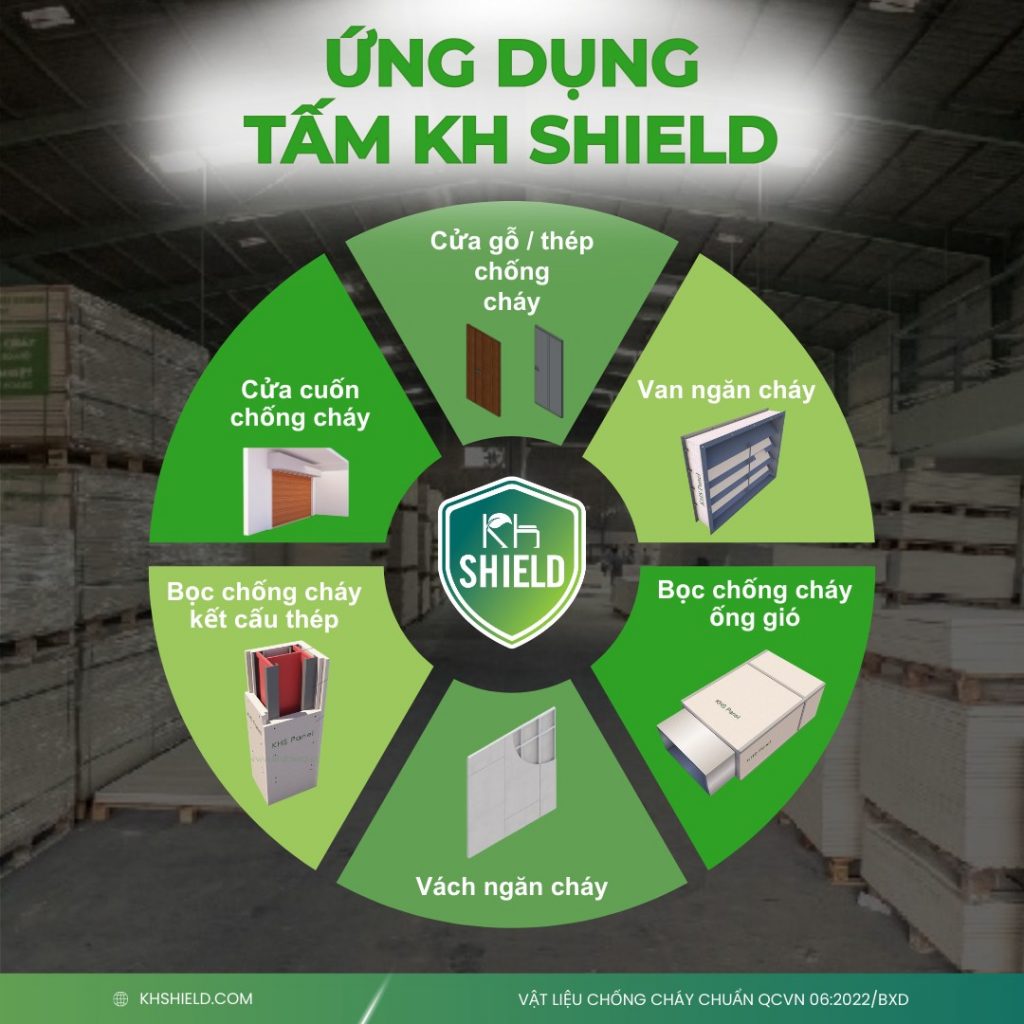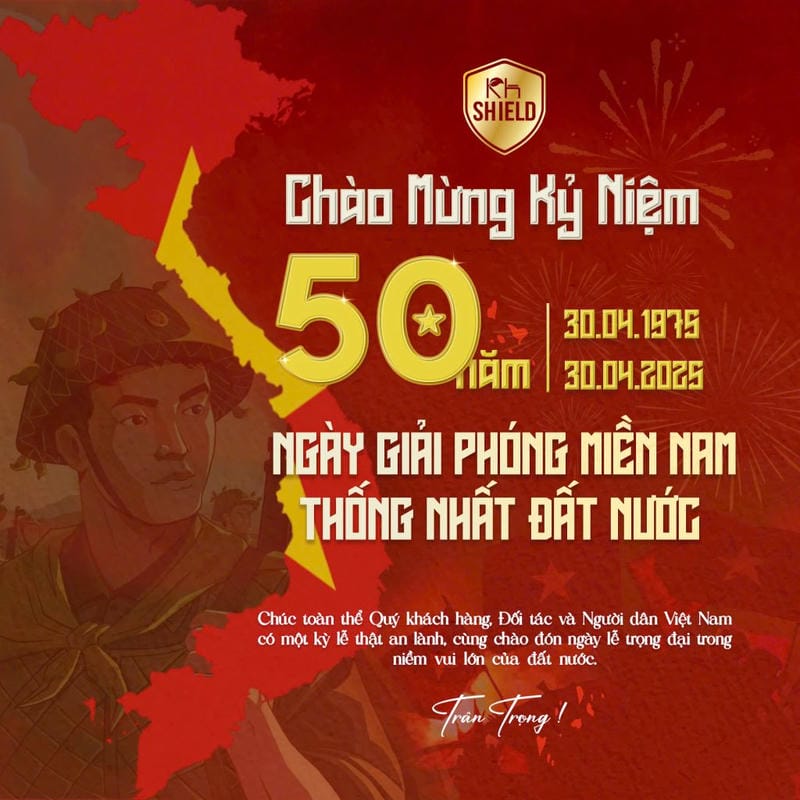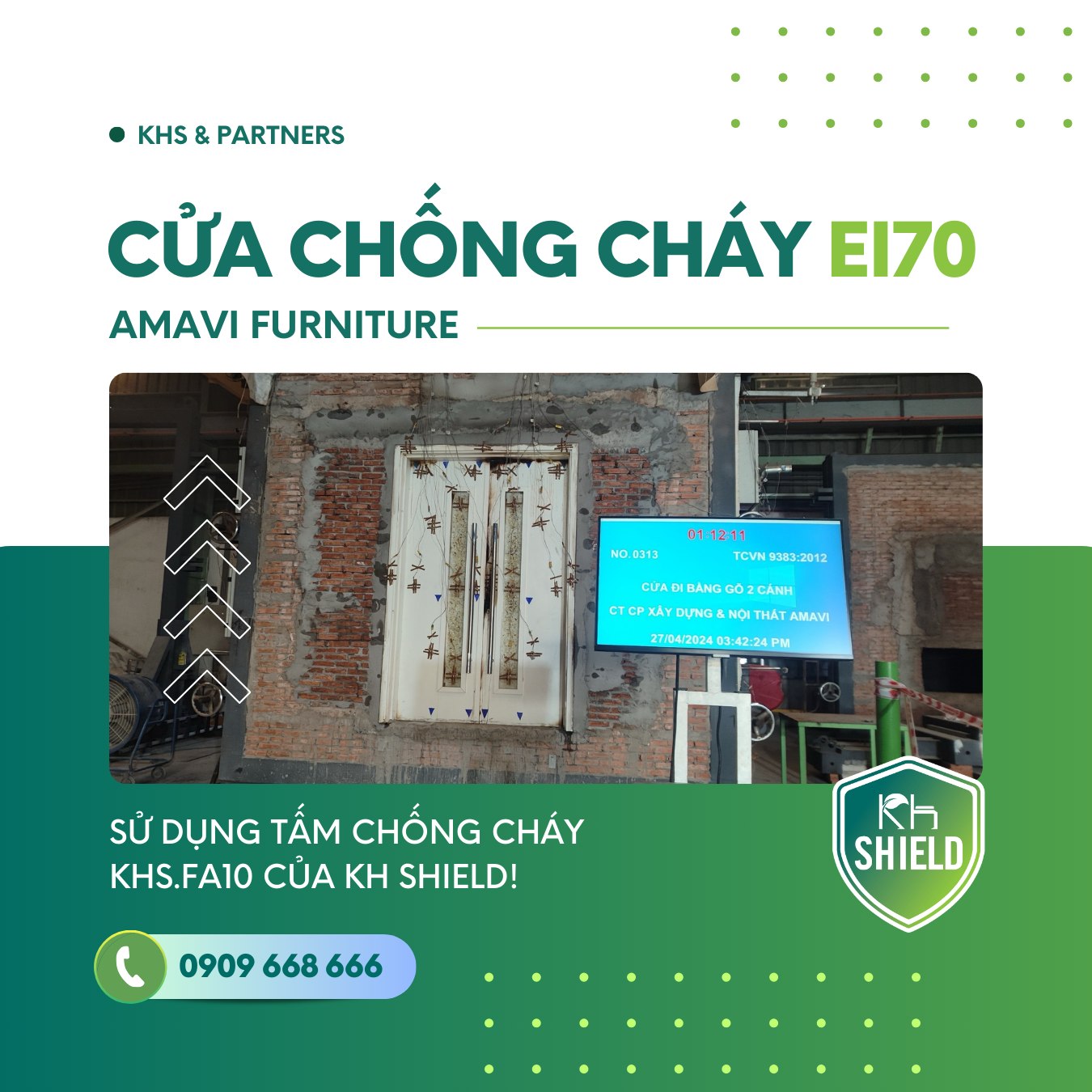
Thematic
Clarifications on Regulations in QCVN 06:2021/BXD
On April 13, 2022, the Ministry of Construction officially issued a document clarifying several questions related to certain regulations in the national technical regulation QCVN 06:2021/BXD on Fire Safety for Buildings and Structures.
The Ministry of Construction received official dispatch No. 297/PCCC&CNCH-P7 dated February 11, 2022; 2493/PCCC&CNCH-P7 dated October 5, 2021; 3022/PCCC&CNCH-P7 dated November 19, 2021; 3310/PCCC&CNCH P7 dated December 9, 2021; 2612/PCCC&CNCH dated October 18, 2021 of the Department of Fire Prevention, Fighting and Rescue related to a number of regulations in national technical regulations QCVN 06:2021/BXD on Fire safety for homes and businesses submit. After studying, the Ministry of Construction responded as follows:
NỘI DUNG BÀI VIẾT
- 1. Regarding correspondence No. 2493/PCCC&CNCH-P7: Determining the fire resistance limit of samples protected by fire-resistant materials:
- 2. Regarding correspondence No. 2612/PCCC&CNCH-P7: Applying typical fire protection solutions stated in Appendix F of QCVN 06:2021/BXD:
- 3. Regarding correspondence No. 3310/PCCC&CNCH-P7:
- 4. Content of correspondences No. 3022/PCCC&CNCH-P7, 297/PCCC&CNCH-P7: These reiterated the requirements in correspondences No. 2493/PCCC&CNCH-P7, 2612/PCCC&CNCH-P7, 3310/PCCC&CNCH-P7, which have been clarified in points 1, 2, and 3 above.
- 5. Standard protective covering solution for column and beam structures
1. Regarding correspondence No. 2493/PCCC&CNCH-P7: Determining the fire resistance limit of samples protected by fire-resistant materials:
a) For structural elements grouped by criteria such as: (1) cross-sectional shape; (2) type of structure; (3) thickness of protective layer; (4) required fire resistance limit; (5) critical temperature of the structure as required by design, the selection of test samples will be determined by the design unit based on specific requirements related to the structural element used in the project. The Hp/A ratio is only one factor reflecting the rate of temperature increase when the element is exposed to fire. The scope of application of the tested sample is specified in Note 3, Section 2.3 of QCVN 06:2021/BXD.
b) In practice, there will be many different cases in classification, such as structural elements with different critical temperatures, various thicknesses of protective layers, multiple types of protective coatings in the same project, or when it is not easy to classify into a number of groups as above, based on the design documents, the design unit and the investor will propose the structural element test sample. The test results serve as a basis for evaluating other structural elements calculated according to the applicable fire resistance design standards.
c) In all cases, fire resistance design must ensure the fire resistance limit for the structure according to the minimum requirements of QCVN 06:2021/BXD based on the set of data supporting the design, established according to the procedures of the standards.
2. Regarding correspondence No. 2612/PCCC&CNCH-P7: Applying typical fire protection solutions stated in Appendix F of QCVN 06:2021/BXD:
a) The specific technical requirements for types of materials or typical solutions for coating, cladding fire-resistant protection for steel structures or forming partition components stated in Appendices F1, F2, F3, F8, F9, F10, F11 must be announced by the manufacturer or contractor providing the solution or material in the form of design drawings or detailed technical instructions and must ensure conformity with the mechanical, physical, and chemical properties of their materials or products. They must also provide evidence of fire resistance performance suitable for the intended application.
b) The assessment of the fire resistance protection capability of material systems, as well as the recognition and certification of test results, should be carried out according to applicable test standards and the quality certification process for products in accordance with legal regulations.
3. Regarding correspondence No. 3310/PCCC&CNCH-P7:
Clarifying the requirement in Section 11.2.3-TCVN 9383:2012: “Test samples must be evaluated based on the maximum temperature increase criteria specified in TCVN 9311:2012 (180 K), except for the case where the temperature increase limit for the door frame allows up to 360 K”:
When assessing the thermal insulation of fire-rated door assemblies, the maximum temperature increase on the sample parts is 180°C, except for the door frame, where the maximum allowable temperature increase is up to 360°C. (Note: K refers to the temperature increase, not the degree Kelvin).
4. Content of correspondences No. 3022/PCCC&CNCH-P7, 297/PCCC&CNCH-P7: These reiterated the requirements in correspondences No. 2493/PCCC&CNCH-P7, 2612/PCCC&CNCH-P7, 3310/PCCC&CNCH-P7, which have been clarified in points 1, 2, and 3 above.
The above dispatch is a response from the Ministry of Construction to the Fire Prevention and Rescue Police Department on a number of issues related to the regulations in national technical regulations QCVN 06:2021/BXD on Safety. fires for houses and buildings.
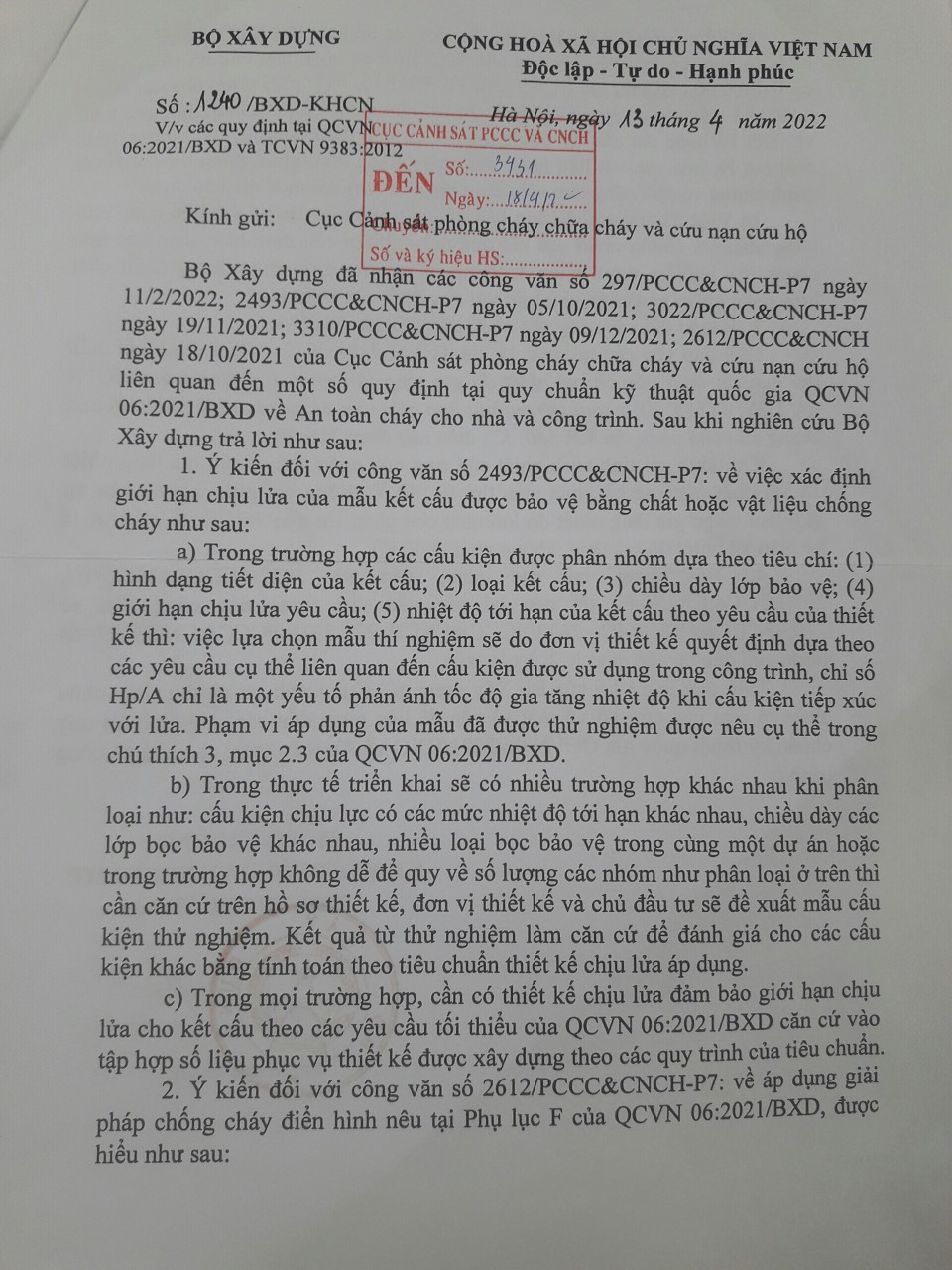
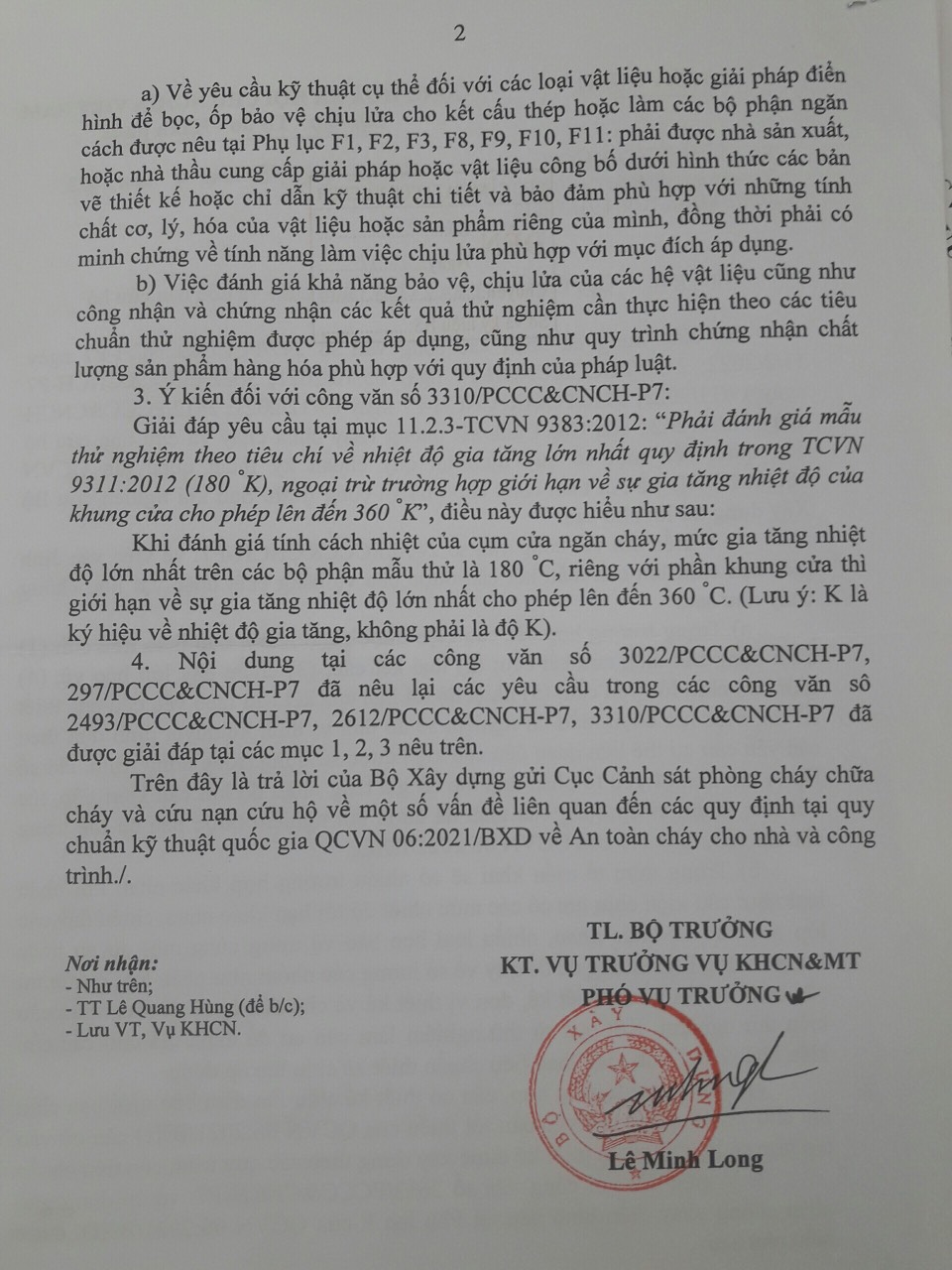
Photo of official dispatch from the Ministry of Construction sent to the Fire Prevention and Rescue Police Department
5. Standard protective covering solution for column and beam structures
To meet fire safety regulations, many businesses are currently looking for suitable fire-resistant protection solutions for steel structures. After testing various solutions without achieving the desired results or choosing temporary solutions with short service lives, they often incur resource, time, and budget losses.
On October 31, 2021, KH Shield successfully tested the “fire prevention effectiveness of up to 120 minutes” of the protective covering solution according to fire protection standards for steel structures using KHS.HF.M insulation panels at IBST. This is also one of the solutions being used by many businesses not only because it meets fire protection standards but is also a “long-life” solution, saving long-term costs to help make the project sustainable according to the standards. time.
H Shield JSC is a provider of fire-resistant, insulating materials trusted and partnered by many clients. We focus on product quality, offering optimal fire-resistant and insulating solutions that ensure application with structural components, creating a compliant system. For more in-depth advice on specialized fire safety solutions or testing issues, feel free to contact KH Shield at 0909.668.666 or email info@khshield.com.
Update the latest topic
Update highlights

Consultation on fire and explosion prevention solutions









